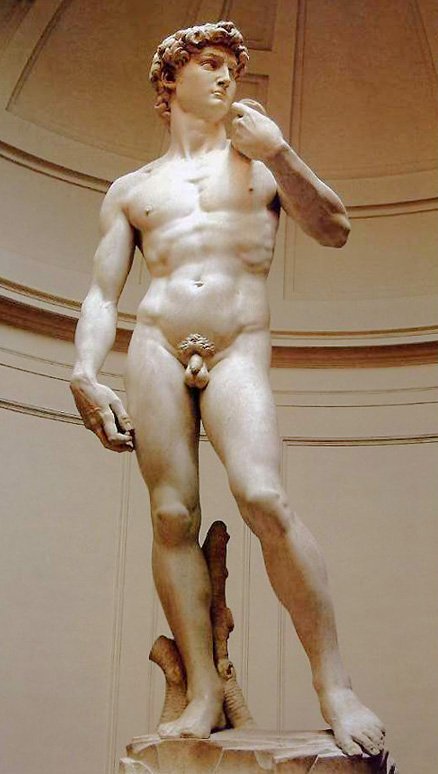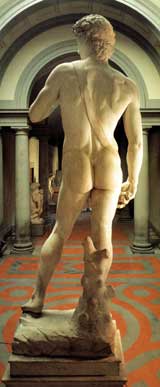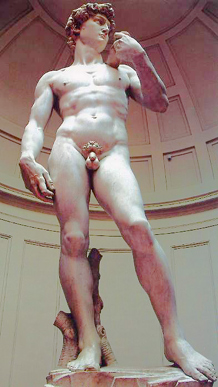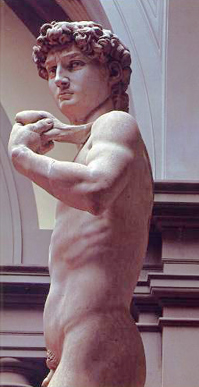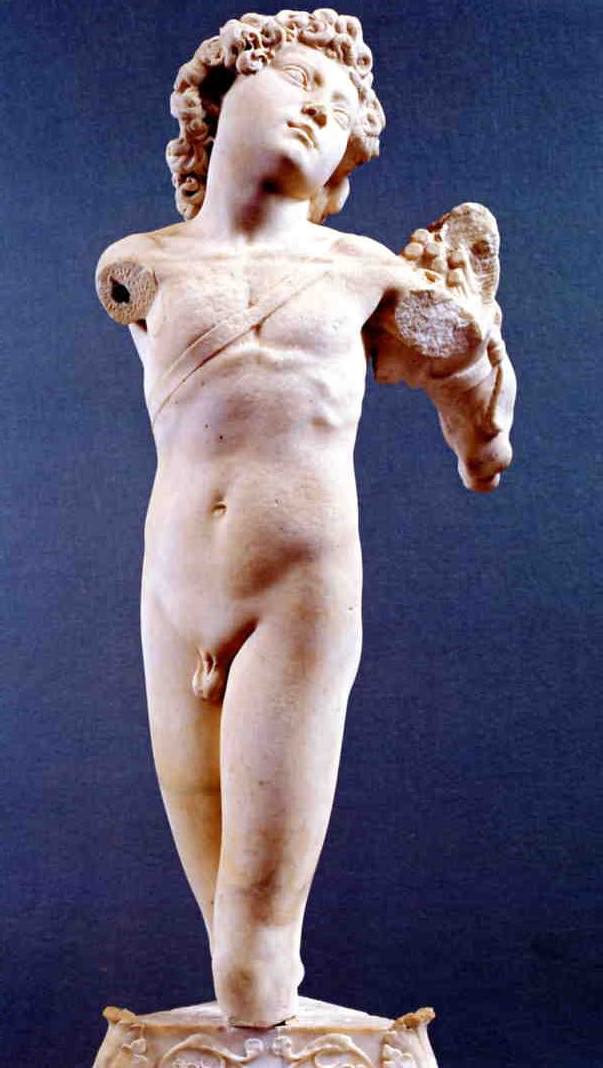Michelangelo's David.
The most famous statue in the world?
For Michelangelo, his statue of David proved to be a defining moment in his artistic career. The story begins with a commission for a statue of David dating as far back as 1466 when the artist Agostino di Duccio began work on the marble block. Agostino did not make much progress, only managing to mark out the shape of the legs, feet and drapery, his work on the project ceased for reasons that remain unclear. The project was resurrected some ten years later when the artist Antonio Rossellino worked on the statue, but his contract was terminated with no real progression being made. The marble block, purchased from the famous quarries at Carrara, remained in the courtyard workshop of Florence Cathedral and lay neglected for the next twenty-five years.
After the success of the Rome Pieta of 1499-1500 Michelangelo was recognised as a genius, a master of his craft. The Guild of Wool Merchants wanted to revive the abandoned project for David, Michelangelo was the artist who was offered and accepted this prestigious contract.
Working with a second-hand piece of marble that had deteriorated during its years of exposure to the elements did not please the artist, however, the Guild of Wool Merchants did state in Michelangelo's contract that the stone was "badly roughed out". The wording is intended to make it clear to the artist that the aged marble block (too expensive a commodity to waste) was to be used for the statue.
Michelangelo was only twenty-six years old when he won the contract for David. He began work on Monday, September 13th, 1501, and it would take him two years to turn the marble block into the iconic image that we know and admire today.
This rear view of David
clearly illustrates Michelangelo's
skill. His knowledge of the human
form has recorded the muscular
form of the shepherd boy with
the strap of the slingshot falling
across his back. Superb! (s)
Michelangelo was constrained by
the shape of the second-hand
marble he was working with.
Despite this, he has created a
youth with a slim muscular build.
This view highlights the slightly
twisting torso expertly captured
by the artist. (s)
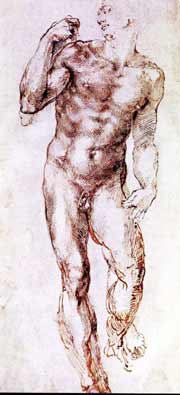 Study for David, 1501-1504 (s)
Study for David, 1501-1504 (s)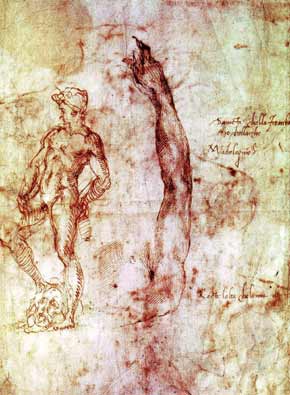 Study for David, 1503-1504 (s)
Study for David, 1503-1504 (s)The intended location for the finished statue was the roof of Florence Cathedral but this plan was abandoned when it became clear that raising the six-ton seventeen-feet tall figure was not feasible. A committee including the artists Leonardo da Vinci and Sandro Botticelli was set up to decide on an appropriate site for the David. The chosen location was the Piazza della Signoria outside the Palazzo Vecchio (the town hall of Florence). The heavily guarded statue was pulled into place by a specially prepared cart, and it took four days to position in its new home.
According to Vasari Pier Soderini (the Mayor of Florence) was standing beneath the statue as it was put into place. The mayor complained to Michelangelo that the nose was too thick. Michelangelo tricked Soderini by climbing the statue with a chisel and some marble dust concealed in his hand, pretending to work on the nose and sending down a shower of dust, he asked Soderini if it was improved, the mayor replied: "I like it better, you have given it life".
Michelangelo's David differs from earlier versions (see the Three David's) in that it does not show the severed head of Goliath, instead, the artist has depicted the moment before the young shepherd begins his battle with the giant Philistine. In 1873 the statue was moved to Accademia art gallery in Florence to protect it from damage, a replica now stands in its original location at the Piazza della Signoria.
- Home
- Michelangelo
- Michelangelo David
